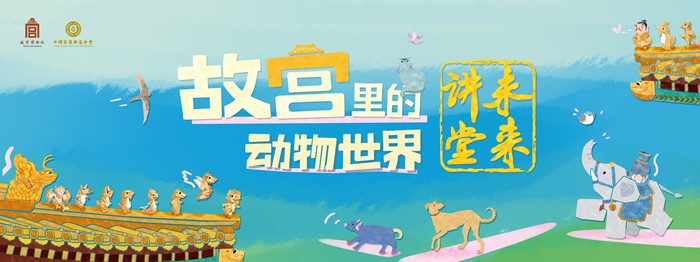
A thematic poster of the "Future Classroom: Animals in the Palace Museum" event
The China Soong Ching Ling Foundation (CSCLF) and the Palace Museum jointly held the "Future Classroom: Animals in the Palace Museum" event at the Palace Museum in Beijing on May 17 to commemorate its centenary anniversary and mark the arrival of the 49th International Museum Day.
The "Future Classroom" event drew the attendance of over 150 primary and middle school students. Shen Beili, Vice-Chairperson of the CSCLF, and Wang Xudong, Member of the Leading Party Members' Group of the Ministry of Culture and Tourism and Director of the Palace Museum, attended and addressed the event as well.
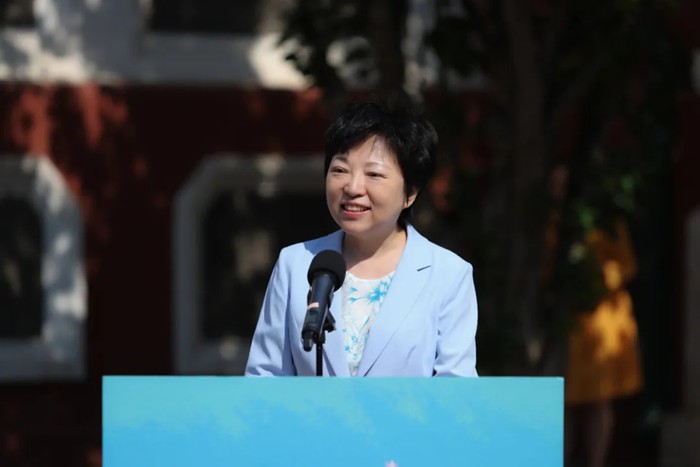
Shen Beili, Vice-Chairperson of the China Soong Ching Ling Foundation, attends and addresses the "Future Classroom: Animals in the Palace Museum" event at the Palace Museum.
Shen said that the Palace Museum is a treasure trove of Chinese culture and a living "textbook" for us. With the arrangement of lively activities, the "Future Classroom" event aimed to help young students grasp a deep understanding of the Palace Museum and traditional Chinese culture, show full respect to profound cultural heritage behind the Palace Museum, carry out cultural education for youth in an innovative manner, and plant a seed of cultural confidence as well as national pride in their heart.
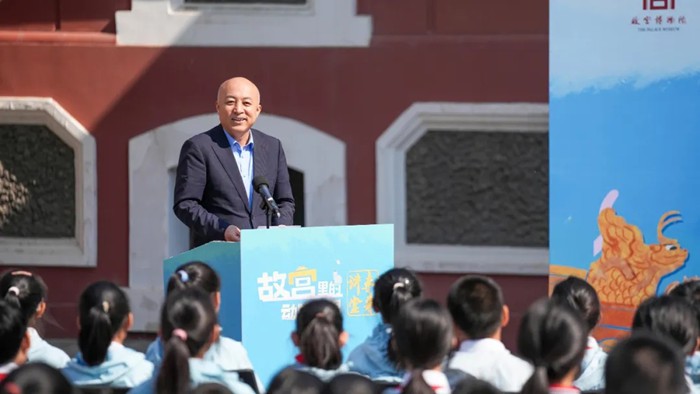
Wang Xudong, Member of the Leading Party Members' Group of the Ministry of Culture and Tourism and Director of the Palace Museum, attends and addresses the "Future Classroom: Animals in the Palace Museum" event at the Palace Museum.
Wang said that the Palace Museum has been working on exploring the creative transformation and innovative expression of traditional Chinese culture in the rapidly changing society. The interpretation of "mythical animals" at the Palace Museum not only involves the characteristics and connotations of relevant animals but also guides children to proactively figure out human wisdom and Chinese people's attitude toward nature, life and beautiful life.
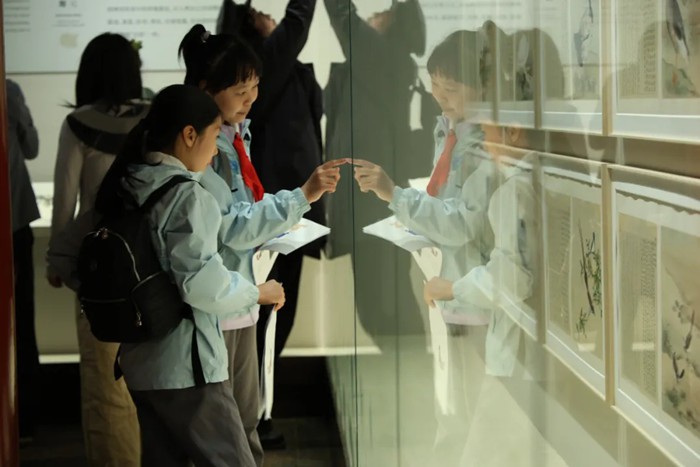
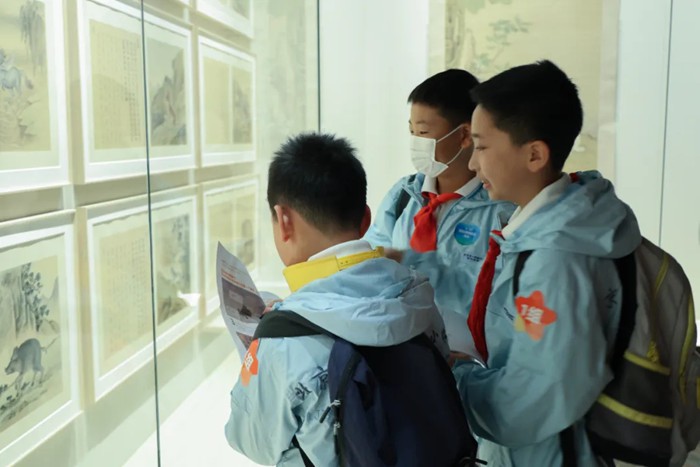
Students explore divine beasts at the Palace Museum.
During the "Future Classroom" event, attendees received three main tasks and a side assignment. At the "All Beings Thrive in Harmony: A Special Exhibition of Animal-themed Paintings from the Palace Museum Collection" in the museum's Wenhua Hall, they looked for divine beasts such as Xiezhi and Qilin in ancient paintings and took photos of artistic treasures with a study list.
After the completion of an exploration task, a student said that all animals in ancient paintings have their own connotations. The special segment made abstract calligraphy and paintings reachable and understandable and explained symbolic meanings behind animal images in those artworks to further deepen participants' understanding of the unique expression of Chinese culture and unlock special strength in the decoding of cultural images.

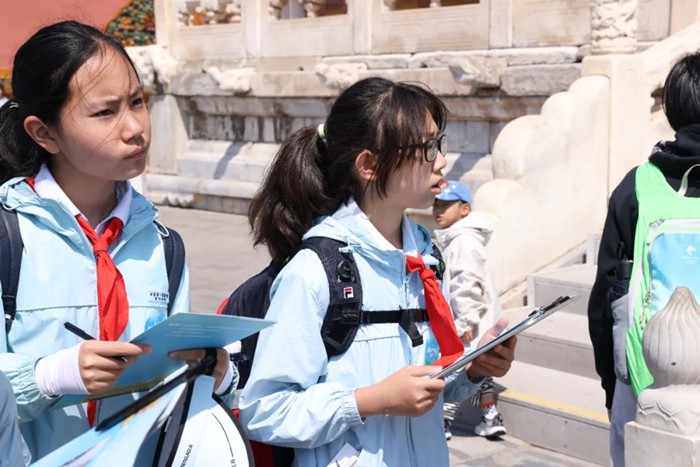
Students admire mythical animals at the palace Museum.
They became "detectives" of mythical animals and used their paintings to depict distinctive features of bronze lions and elephants in the Qianqing and Chuxiu palaces. A child said that the facial expression of all divine beasts are different.
The closer observation allowed students to further admire the wisdom behind the utilization of divine beasts in protecting the safety of architectures and the combination of pragmatic functions with spiritual aspiration in traditional Chinese culture.
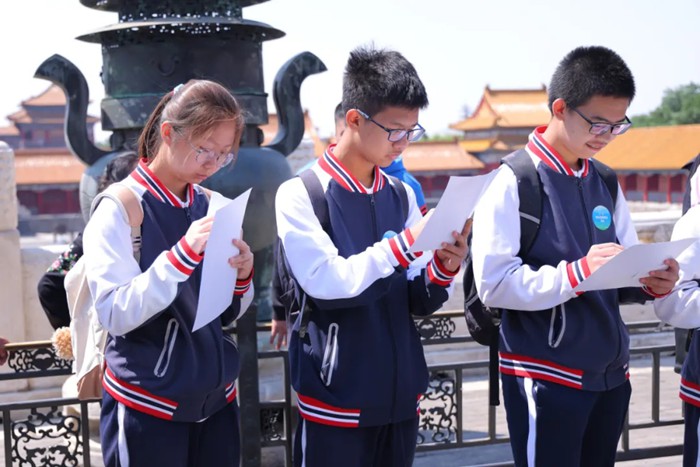
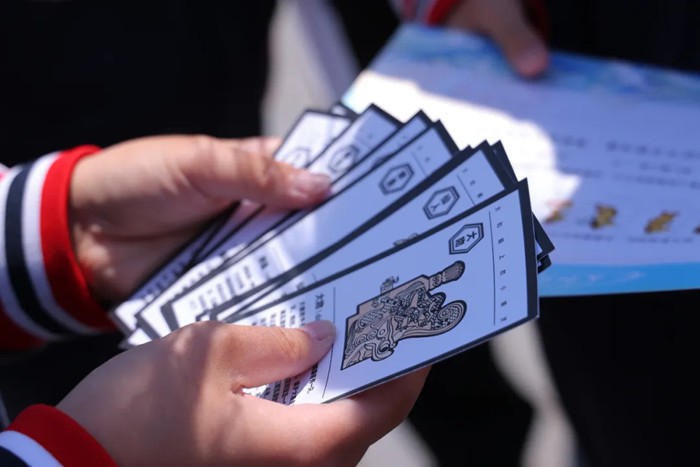
Students figure out mysteries behind ridge beasts at the Palace Museum.
Standing under the eaves of the Taihe, Zhonghe and Baohe palaces, students looked up to count ridge beasts, arranged their cards and studied the arrangement patterns. They annotated in the study list that there are 10 ridge beasts in the Taihe Palace and that they are like heavenly guards.
This assignment made etiquette culture in traditional Chinese architecture more vivid and interest. Attendees learned more about strict hierarchical system and the emphasis upon the unity between heaven and mankind in traditional architecture.
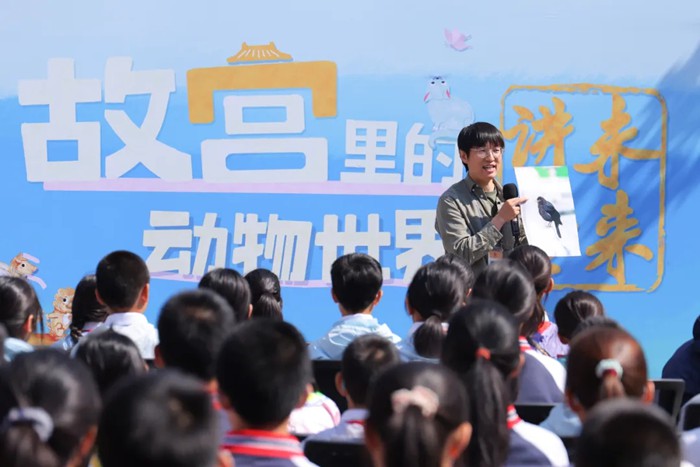
Zhu Kai, a photographer at the Palace Museum, gives an introduction to birds living there.
In addition, students also completed the task of identifying birds via observation cards in the exploration zone to support the main tasks. The thematic lecture given by Zhu Kai, a photographer at the Palace Museum, helped them further realize the museum's historical, cultural and ecological value. They found that there are numerous birds as well. They gained a deep understanding of the ecological wisdom featuring harmonious co-existence between nature and humanity in traditional culture, fostered interdisciplinary thinking patterns, and enhance personal awareness of ecological conservation in the process.
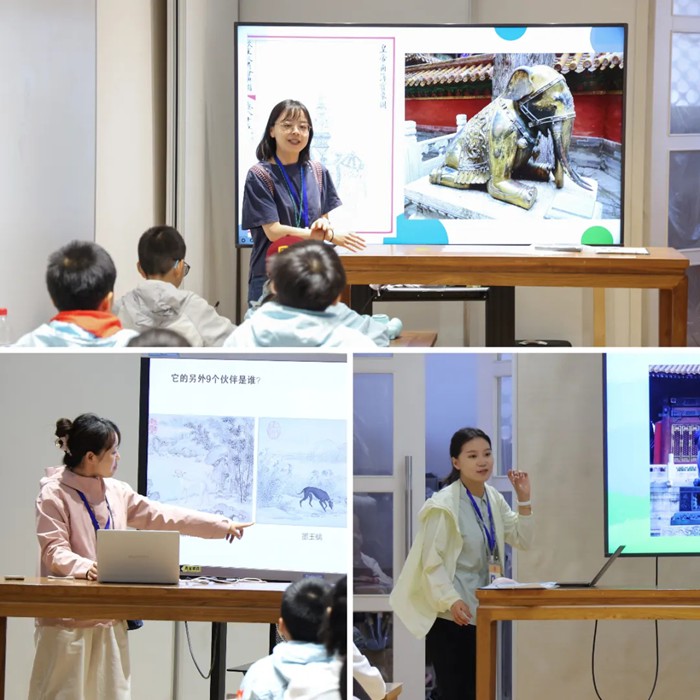
Three teachers from the Palace Museum's Social Education Department give their thematic lectures.
At the Palace Museum's Education Center, three teachers from the museum's social education department held separate lectures titled "Little Spirits on the Eaves," "Divine Beasts at the Palace Entrances" and "Mythical Animals in Ancient Paintings" respectively. They guided students to review their learning results and kids also proactively shared personal feeling and experience.
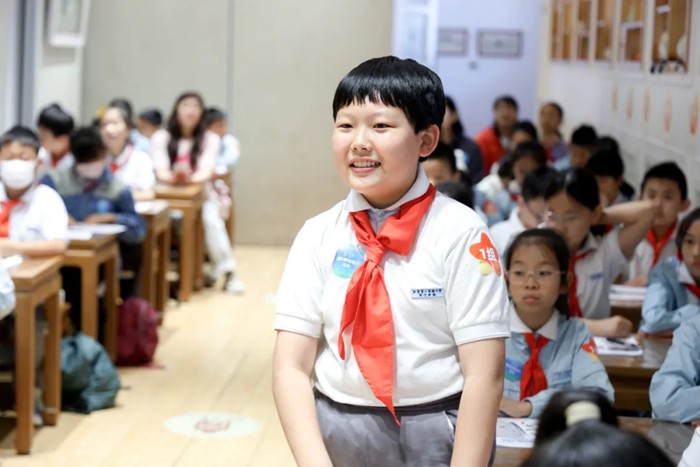

Students raise their questions to lecturers.
Students learned the making of animal-themed headdresses and held interactions with guests under the disguise of favorite animals in the Baoyun Building. They acquired knowledge and became more interested through practice.
"It's the first time for me to take photos of the divine beasts at the Palace Museum. It's extremely interesting," "In the past, I didn't know that there are so many mythical figures on the eaves," "The Palace Museum is not only a treasure trove but also a world of animal stories," said many students at their interview.

Attendees pose for a group photo.
The "Future Classroom" event followed the guiding principle that nurtures talent through education, took the Palace Museum's rich animal-themed cultural resources as a carrier, integrated relevant culture into curricular arrangement, organized a wide range of activities such as thematic explorations, task challenges, on-site explanation, handicraft making, and student presentation, and put in place an education experience scenario that combines knowledge, amusement and experience together, encouraging students to deepen their understanding of traditional Chinese culture during the participation of relevant activities. A veteran education worker at the Palace Museum said that the museum aims to guide youth to better understand cultural heritage behind historical relics and grow from passive learning into active exploration.
The "Future Classroom" event is an extracurricular education innovation platform established by the CSCLF in 2018 to foster virtue through education and nurture a new generation of talents with a balanced development in morality, intelligence, physical fitness, aesthetics, and labor skills. During the past years, the public welfare initiative has invited influential and reputable figures from various fields to give lectures to primary and middle school students about such topics as morality, physical fitness, aesthetics and labor, imparting knowledge to them and sharing personal experiences as well as insight. So far, it has become a popular extracurricular educational activity.
